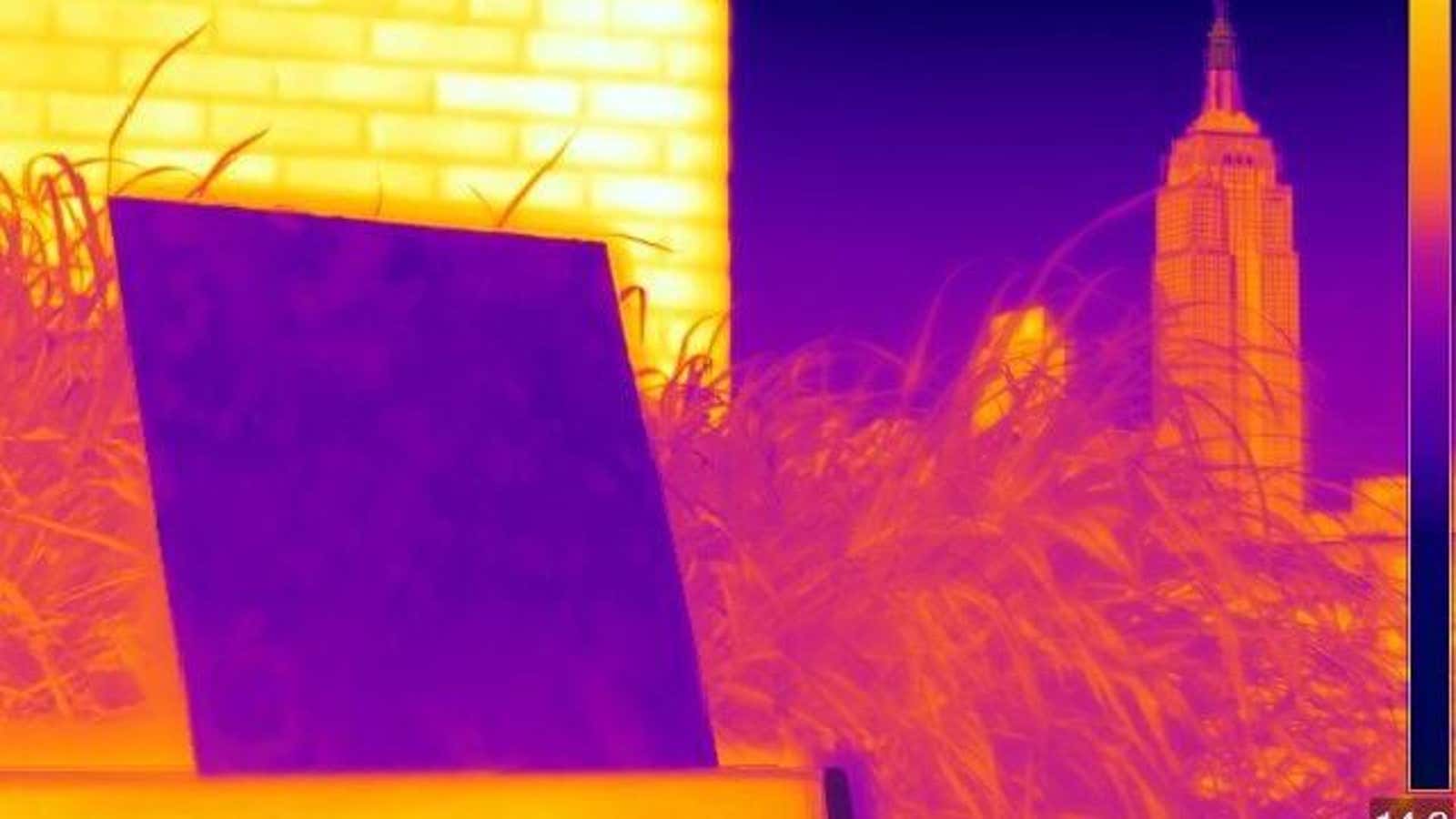It’s bleak, but certain: If we can’t find a way to mitigate our rising temperatures, annual heatwaves will kill tens of thousands each year. People will perish most of all in cities, where air, surface, and soil temperatures are especially warm. But a team of researchers from Columbia University’s engineering department has a solution, which they say could drop surface temperatures by as much as 6°C (11°F) and save lives in the process. It’s a very special white paint.
The researchers, who published their work last month in the journal Science, developed the paint by adding air voids to plastics, resulting in a thick, white coating that can be slapped onto almost any surface. It’s an example of passive daytime radiative cooling (PDRC), where a surface cools down by reflecting sunlight and heat back to the atmosphere.
Even ordinary white paint reflects a certain amount of heat and sunlight, as any visitor to Santorini, Greece, can attest. But this new coating developed by materials scientists does a far better job. That’s because, like foam, it’s riddled with infinitesimally small holes, which scatter and reflect sunlight of all different wavelengths.
Many of us rely on air conditioning to cool our environs. But it’s a harmful and temporary solution, which creates an artificially cool space by pumping hot air outside, increasing outdoor air temperatures in the process. It’s also extremely costly. Alternatives such as this advanced paint could cut cooling costs dramatically, while doing their bit for the environment.
Though the coating works best in sunny places with clear skies, like Phoenix, Arizona, it’s also effective in foggy tropical environments, like Bangladesh. And it doesn’t even have to be white. The coating can be dyed other colors, though the researchers noted that it was slightly less effective then. “This is important in view of human tastes,” doctoral student Jyotirmoy Mandal told Smithsonian magazine. “Not everyone wants a white roof on their house, and paint companies have been trying to develop ‘cool colors’ for decades.”
The next step is trying to make the product still more eco-friendly, either by using water- or alcohol-based systems to make coatings with similar cooling performances, or by recycling discarded polymers.
